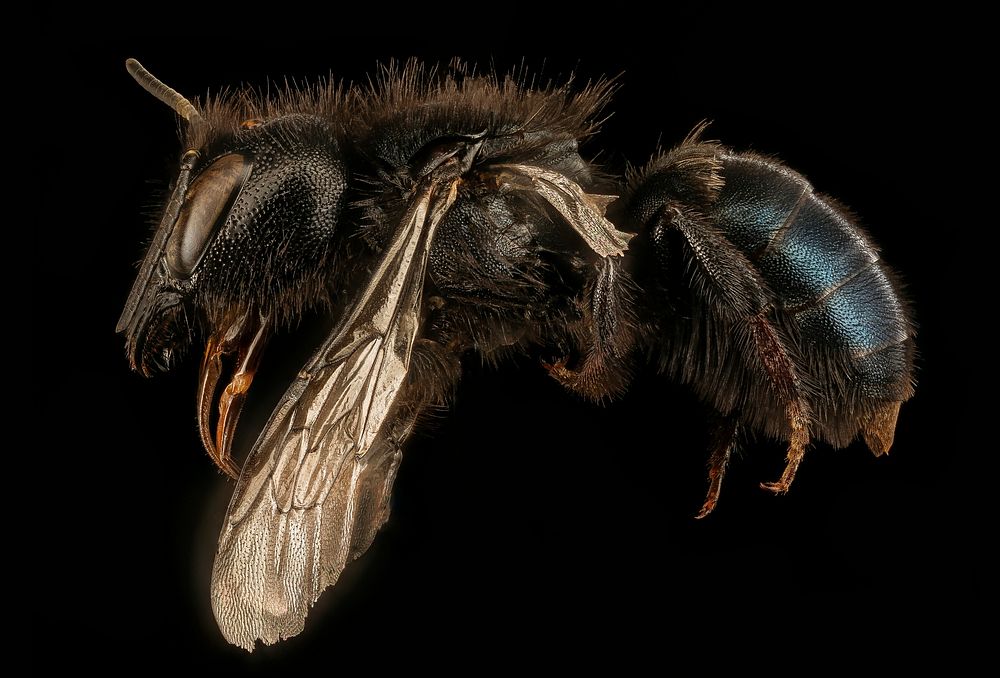https://www.usa.gov/copyrighted-government-workshttps://www.rawpixel.com/image/4039012

Osmia montana, left, f, Mariposa CA_2017-07-27-19.25
Osmia montana, the Montana Mason Bee, is an unusual bee that dwells in the western U. S. and British Columbia (1). Females collect pollen from Asteraceae (Asters) to feed their young, making these bees mesolectic- meaning they specialize on pollen from several flowers in one family (3). The female bees have a unique method of harvesting pollen from flowers referred to as “abdominal drumming” (3). This involves rapidly pumping the abdomen up and down, appearing to shake and dance to vibrate pollen up onto her abdominal scopae (hairs) (3). Their integument (skin) is all black versus the metallic blues or greens of most Osmia. Females have enormous mandibles in comparison to the rest of her face. Nest cell partitions are composed of chewed up leaves (as opposed to mud,
which most other Osmia use) (2). They nest in holes bored into wood by other insects, mostly beetles, or in hollow stems (2). They emerge in spring and are active through early summer (1). Original public domain image from Flickr
Public DomainFree CCO U.S. Government image for Personal and Business use